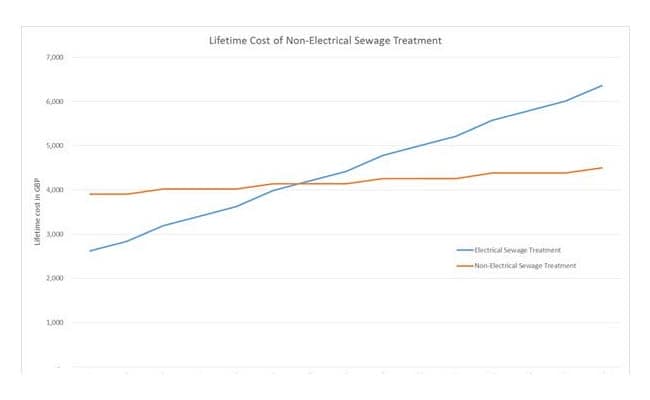
Graph: BIOROCK vs Electric Systems: Average cost over 15 years for a 3 bedroom house.
Septic tanks settle out solids before discharging untreated septic effluent to a soakaway, while package sewage treatment systems treat the effluent after primary settlement before the water exits the system safe to be discharged directly to rivers, ditches, or groundwater. Basically, sewage treatment plants treat raw sewage before discharging river water. Traditional package sewage treatment systems use compressors or blowers running on electricity to perform the treatment. However, there are now domestic wastewater treatment systems that work without the need for any power supply. Non-electrical sewage treatment systems are thus completely silent, making non-electric sewage systems an ideal solution for domestic properties where the sewage treatment system is located next to bedroom windows, home offices, or gardens.
A sewage treatment plant relies on bacteria to break down the raw sewage, providing normally good conditions for bacteria to develop when there is less or no wastewater flow, and avoiding smells when flows start again.
Non-electrical sewage treatment plants are different from traditional electrical plants: Their technology makes them subsequently better suited to conditions where the flow of sewage stops altogether for some time or varies from day to day. Non-electric package wastewater treatment plants are ideal for standard residential properties on sites without electricity, holiday homes, village halls, or wedding/conference venues, but also tourist places such as camping/caravan parks.
Non-electrical package sewage treatments may be sometimes a little bit more expensive to buy than some cheap electrical sewage treatment systems. However, with no electric costs for the treatment process, minimal motors periodic maintenance or compressors repairs costs, and long emptying intervals of the primary tank, the possible extra purchasing cost of a non-electric sewage treatment plant is soon recovered.